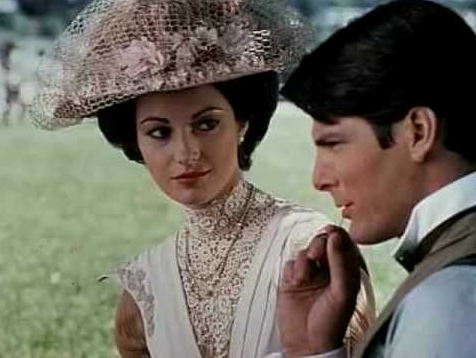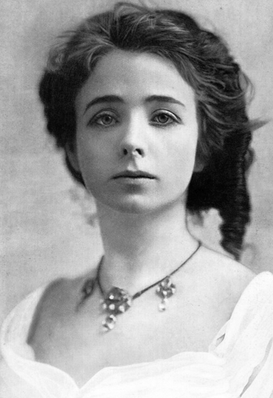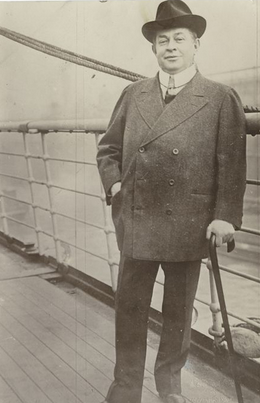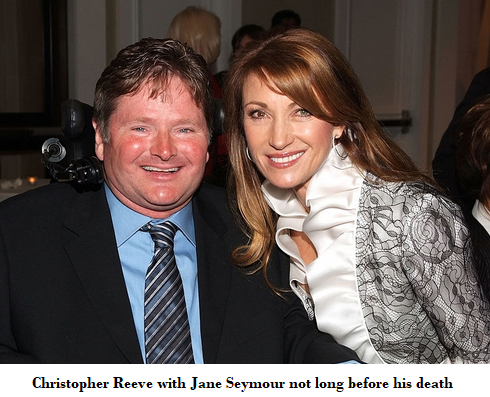
‘Somewhere in Time’: A Supernatural Fairy-Tale

The first film that the late Christopher Reeve made, after his breakthrough role as Superman (1978), was Somewhere in Time (1980), directed by Jeannot Szwarc. It was Reeve’s favourite of all his movies. The screenplay was by Richard Matheson, from his book Bid Time Return, and the haunting score was created by John Barry, the composer for eleven James Bond films.
Somewhere in Time is a romantic drama that addresses eternal love, grief and loss. Add to this the intertwined themes of aching musical motifs: Rachmaninoff’s Rhapsody on a Theme of Paganini, and John Barry’s Somewhere in Time theme.
Joe Dolce writes on film and television in every Quadrant.
Click here to subscribe
The heart of the film is a love story in which playwright Richard Collier (Reeve) is transported, through self-hypnosis, back to 1912, where he meets and falls in love with stage actress Elise McKenna (Jane Seymour) but is finally forced back to his own time, leaving her behind.
Travelling through time via auto-suggestion appeared in Mark Twain’s Connecticut Yankee in King Arthur’s Court (1889) which told the story of an engineer who, after a blow to the head, goes back to sixth-century England. Twain’s novel is considered one of the foundational texts in science-fiction time travel.
Somewhere in Time was derided by critics in its day as sentimental and melodramatic, but after a cable television broadcast a decade later it became a cult hit with a devoted fan base.
The story begins in 1972 when Richard Collier is having a debut of his first play at a local college. An elderly woman approaches him through the crowd and hands him an antique pocket watch, whispering to him, “Come back to me.” Collier has no idea who she is. After the play, the woman returns home and dies in her sleep.
Eight years later Collier, now a successful playwright, is suffering from writer’s block. To stimulate his imagination, he goes on a road trip, passing the Grand Hotel on Mackinac Island, and feels compelled to go inside and look around. In the hotel’s Hall of History he sees a photograph of a woman from the early 1900s, Elise McKenna, the “most famous actress of her time”. He is fascinated by her and in the local bookshop finds press clippings and photographs, including one of her in later years, and recognises her as the woman who had given him the watch.
He visits McKenna’s former housekeeper but she refuses to speak to him—until he shows her the watch. She tells him it was McKenna’s most precious possession and allows him to come in. In a bedroom, Collier discovers McKenna’s music box, which plays a variation of Rachmaninoff’s Rhapsody on a Theme of Paganini, Collier’s favourite tune. He discovers a book written by one of his former teachers, Professor Gerard Finney, on time travel.
Time has no independent existence apart from the order of events
by which we measure it. —Albert Einstein
Believing now that there is some kind of connection between McKenna and himself, Collier goes to Finney, who suggests that time travel might be possible through auto-suggestion, but there must be no objects, from the present time, to distract him, or else the hypnotic state would be broken. Finney also warns him that his efforts, even if successful, could fatally weaken him.
Collier checks into the Grand Hotel and makes an attempt at the self-hypnosis technique but fails. Discouraged, he explores the hotel’s archives, where he uncovers an early twentieth-century guest register from the weekend that McKenna had performed there, and finds his name, written in his own handwriting. This encourages him to try the self-hypnosis again. Eventually succeeding, he awakens back in the early 1900s, still at the hotel. He checks in, requesting the room number he had seen in the old guest register.
While strolling beside a lake he encounters Elise McKenna, who asks, “Is it you?” Her manager, William Robinson (Christopher Plummer) has told her that a man will appear to distract from her career and, with self-interest in mind, warns him to keep away. But Collier continues to seek her, and they fall in love.
Collier attends the play that McKenna is performing at the hotel but during the performance she goes off script, improvising a personal monologue to Collier, which panics the production crew and infuriates Robinson.
Afterwards, during a photo session, when she is having difficulty posing, Collier quietly enters the room behind the photographer, and she smiles at him. The photographer snaps her expression, which is the same one in the photo that Collier had seen in the Hall of History in 1980.
Robinson, distrustful of Collier’s influence on his protégé, requests a private meeting. But Collier is tricked and overpowered by two of Robinson’s associates, tied up and left in the hotel stable. Robinson tells McKenna that Collier has left suddenly, but she doesn’t believe him.
The theatrical company departs but McKenna stays behind, finding and reuniting with Collier, and they spend the night together. In the morning, over breakfast, as he is turning out the pockets of his jacket, a penny dating from 1979 falls out. This object breaks the hypnosis, as he was warned it might do, and he reawakens back in 1980.
Distraught, he makes many attempts to return, using the same techniques, but fails. Broken-hearted, and weakened by his persistent efforts to go back, he falls ill and dies. The film closes with a short mystical interlude where he and McKenna meet in the afterlife.
Christopher Reeve was born in 1952, and, as well as an actor and director, was a licensed pilot, flying solo across the Atlantic Ocean twice. In the 1980s he trained competitively as a horseman. He built his own sailboat, The Sea Angel, sailing up the coast from Virginia to Nova Scotia.
Apart from his successes in Superman (1978), The Bostonians (1984) and The Remains of the Day (1993), he was renowned for the number of roles he turned down, including Richard Gere’s character in Pretty Woman (he walked out of the audition), American Gigolo, The World According to Garp, Fatal Attraction, Lethal Weapon and Body Heat. He became a quadriplegic in 1995, after being thrown from a horse during a competition. He was paralysed from the neck down, requiring a wheelchair and ventilator for the rest of his life.
Three years after the accident, he was the producer and lead actor in a remake of Hitchcock’s 1954 film Rear Window, for which he won a Screen Actors Guild Award. His autobiography, Still Me (1998) won a Grammy that year for Best Spoken Word Album. He was offered the part of Mason Verger in Hannibal (2001), one of the follow-ups to Silence of the Lambs, but when he realised Verger was a facially disfigured child-rapist he withdrew in disgust.
Reeve died aged fifty-two in 2004 from an adverse reaction to one of the drugs he had been taking for his condition.
Jane Seymour, who played the part of Elise McKenna, was born Joyce Penelope Wilhelmina Frankenberg in England in 1951. She first appeared in the 1970s television series The Onedin Line, and achieved international acclaim as Solitaire, opposite Roger Moore in the James Bond film Live and Let Die (1973). She won a Golden Globe for her role as Dr Michaela Quinn in the series Dr Quinn, Medicine Woman (1993–1998).
Richard Matheson, the author of the source novel, Bid Time Return, and writer of the screenplay for Somewhere in Time, was born in 1926 in New Jersey, to Norwegian immigrants. He attended the Missouri School of Journalism and during the 1950s published a series of western novels. He found his niche in 1956 with a sci-fi story, The Shrinking Man, which was made into a Hollywood film, for which he also wrote the screenplay. His vampire novel I Am Legend was made into the films The Last Man on Earth (1964) and The Omega Man (1971) and most recently as I Am Legend (2007), starring Will Smith.
Matheson continued writing in the western genre, with screenplays for 1960s television shows Have Gun Will Travel and Cheyenne, but became more recognised for his work on Rod Serling’s first Twilight Zone series, where he contributed a dozen segments, including Nightmare at 20,000 Feet (1963), introducing William Shatner as the protagonist. Matheson also scripted Rod Serling’s introductory and closing statements for the programs. He wrote the story and screenplay for Steven Spielberg’s first film, Duel (1971), which was inspired by a truck that had tailgated him on the day President Kennedy was assassinated.
 In Bid Time Return, the character of Elise McKenna was inspired by the life of American actress Maude Adams (right), born in 1872, and her manager, Charles Frohman, who was the basis for the William Robinson character. Matheson had visited Piper’s Opera House in Victoria City, Nevada, and saw a portrait of Maude Adams, who had once resided there. Adams made her career playing Peter Pan, and died in 1953 at the age of eighty. Matheson became fascinated by her photograph, commenting, “Creatively, I fell in love with her. What if some guy did the same thing and could go back in time?”
In Bid Time Return, the character of Elise McKenna was inspired by the life of American actress Maude Adams (right), born in 1872, and her manager, Charles Frohman, who was the basis for the William Robinson character. Matheson had visited Piper’s Opera House in Victoria City, Nevada, and saw a portrait of Maude Adams, who had once resided there. Adams made her career playing Peter Pan, and died in 1953 at the age of eighty. Matheson became fascinated by her photograph, commenting, “Creatively, I fell in love with her. What if some guy did the same thing and could go back in time?”
He researched Adams’s life and moved into the grand Hotel del Coronado near San Diego to write the novel, dictating most of it into a tape recorder. Bid Time Return won the World Fantasy Award for Best Novel.
Ray Bradbury considered Matheson “one of the most important writers of the twentieth century”. Stephen King said, “When people talk about the genre [horror], I guess they mention my name first, but without Richard Matheson, I wouldn’t be around. He’s as much my father as Bessie Smith was Elvis Presley’s mother.” The film director Roger Corman remembered him as “a close friend and the best screenwriter I ever worked with. I always shot his first draft.”
Matheson died in 2013 at the age of 87.
Matheson’s novel Bid Time Return differs from his film script for Somewhere in Time in significant ways. In the book, Collier does not suffer from writer’s block but has been diagnosed with an inoperable temporal-lobe tumour, which is the reason he has decided to take a road trip, in the limited time he has left.
 The scene where the elderly McKenna places the pocket watch in his hand and says “Come back to me” does not appear in the book. There is an old woman present at the debut of his college play—she is in her late eighties and Collier is only nineteen—but she does not speak to him.
The scene where the elderly McKenna places the pocket watch in his hand and says “Come back to me” does not appear in the book. There is an old woman present at the debut of his college play—she is in her late eighties and Collier is only nineteen—but she does not speak to him.
In the novel, during his investigation into Elise McKenna’s life, Collier discovers that Robinson died on the Lusitania when it was torpedoed by a German submarine in 1915. Maude Adams’s manager, Charles Frohman, died on the Lusitania, where the photo at right was snapped.
McKenna’s character is much earthier in the book. She owned her own private railroad car and a 200-acre farm, which produced wood, pigs and poultry, farming being her passion.
The play that McKenna performs at the Hotel del Coronado is The Little Minister by J.M. Barrie, author of Peter Pan. Barrie created the role of Peter Pan expressly for McKenna, who is physically described, not as traditionally feminine, as in the film, but as having the stature to be able to play either a girl or a boy.
Collier travels from 1971 to 1889 (rather than from 1980 to 1912, as in the film). McKenna tells Collier that she had been expecting him and that is why she asked, “Is it you?” but the reason for her expectation is explained: she had twice been advised by fortune tellers—the first time by an Indian woman who told her that a man would find her under unusual circumstances, and the second time by a gypsy who told her she would meet a strange man on a beach.
McKenna’s manager in the book is fit and physically confrontational and he and Collier have a fist fight which is only halted when Collier reveals to him that he has come from the future and knows Robinson will die on the Lusitania.
McKenna does not improvise any monologue during her performance at the hotel expressly for Collier but stays on script.
After she and Collier have spent the night together, she asks him if he will come and live with her on her farm. When he asks if she ever cared for Robinson, she replies, “Not as a man … as a father, perhaps. I never really had a father, never saw him after a very early age. So I suppose he took that role in my life.”
When Collier reaches inside his vest pocket and finds a 1971 penny, he tries to throw it away, but is unable to let go of it—“The penny remained on my hand like some hideous growth”—and it catapults him back to his own time. In the film, this transportation happens in front of McKenna, who screams in horror; but in the novel, she is fast asleep in an adjoining room.
The book concludes with a postscript by Collier’s brother, Robert, describing Collier’s rapid decline and death, and concluding that the illness most likely initiated his obsessive desire to return to a more idealised and hopeful past. He quotes a doctor who had confided to him that the kind of tumour his brother had “could cause dreaming states and hallucinations of sight, taste and smell”.
The most profound difference between the book and the film is the pocket watch scene—a critical and unusual transformation of the text by Matheson. In the film, there is only one piece of hard evidence that rules out Collier’s time travel as any kind of hallucination—the antique watch given to him by the elder McKenna.
Collier finds his name written in the old hotel guest register in both film and novel, but this could be argued as an imagined event, as no one else saw it but him. The pocket watch scene cannot be a hallucination. It is witnessed, not only by Collier’s fellow students at the university but also by McKenna’s housekeeper. The elderly McKenna is the one who initiates contact and gives Collier the watch, in front of others, asking him to “come back” to her.
Therefore, Collier and McKenna either shared a common hallucination—which is improbable—or Collier did, in fact, travel back to the early twentieth century and return the pocket watch to her, in some kind of ontologically paradoxical time loop.
I am curious as to why Matheson would do this. Perhaps he, and the producers of the film, felt that an inoperable temporal-lobe tumour was a bit dark for the 1980s romantic movie-going public and a simple paradoxical time-travel story was more palatable.
There is much evocative writing in the novel capturing the ambience of the late 1800s, such as this reflection by Collier:
An odd thought just occurred to me … it is that famous men and women I have read about are now alive. Einstein is a teen-ager in Switzerland, Lenin is a young lawyer, his revolutionary days far ahead of him, Franklin Roosevelt is a Groton student, Gandhi a lawyer in Africa, Picasso a youth, Hitler and De Gaulle schoolboys. Queen Victoria still sits on the throne of England … H.G. Wells has only recently published The Time Machine … Henry James has just fled to Europe … in Vienna, Gustav Mahler is commencing his duties as conductor of the Royal Opera.
And later, when Collier is first allowed into McKenna’s bedroom unchaperoned:
“Do you realize—?” she started. “No, you couldn’t, but believe me when I tell you that it is so—that it is nothing short of incredible for a man to be sitting next to me in my hotel room? Me wearing nightclothes? With not another soul around? It’s … supernatural, Richard.”
John Barry, the composer of the elegant and constitutive score of Somewhere in Time, was English. He was already a legend in the world of film music, having written scores for eleven of the James Bond films, perfecting the signature “Bond sound”—brass, jazz and crescendo themes—as early as Goldfinger (1964). He had also written the Grammy and Oscar winning scores to Born Free (1966) and The Lion in Winter (1968).
Jane Seymour, who was a personal acquaintance of Barry and his wife, suggested him to the producers of Somewhere in Time, but the budget for the film was so small they could not afford him. When Seymour showed the script to the Barrys they both liked it, so Barry decided to do it for no upfront money, for backend only. It went on to be one of his most successful recordings.
What is perplexing to me is the number of negative reviews this brilliant film garnered from critics who ought to have known better.
Pulitzer Prize winner Roger Ebert, film critic for the Chicago Sun-Times, said, “the movie surrounds its love story with such boring mumbo jumbo about time travel that we finally just don’t care … the whole movie is so solemn, so worshipful toward its theme, that it’s finally just silly”. Which “we” is Ebert referring to? I care. Hundreds of thousands of people all over the world continue to care.
Vincent Canby, of the New York Times, said: “Somewhere in Time … does for time-travel what the Hindenburg did for dirigibles … the music is largely by Rachmaninoff, whose ‘Rhapsody on a Theme by Paganini’ is played more often than sanity can easily accommodate …” Perhaps it was more than Mr Canby’s sanity could accommodate, but for any composer or serious lover of music, this extraordinary theme is perfectly integrated into the drama.
Wagner called these signature musical theme repetitions, when identified with the appearance of characters, leitmotifs. Both of Somewhere in Time’s signature themes, Rachmaninoff’s and Barry’s, are strong enough to withstand leitmotif repetition. In fact, once you get either of these melodies in your head, they will not leave you alone.
I think where most of the contemporary critics lost their way was in failing to understand the effect of this movie on ordinary people. Working in the rarefied world of “serious” film and theatre criticism, they simply overlooked a popular cinematic phenomenon. Somewhere in Time is deceptively structured in the manner of a historical period piece and time-travel film, but it is really a modern fairy-tale, a Jungian dream-myth with enduring longevity, that slipped through the cracks of the critical comprehension of its day. Like Cinderella or Alice in Wonderland, it combines suspension of belief (fantasy) with belief in things unseen, more akin to spiritual belief.

Each year in October, the Grand Hotel (above) on Mackinac Island, Michigan, which served as the location for the film shoot, hosts a weekend convention for INSITE (International Network of Somewhere In Time Enthusiasts). Michael Shiels wrote in Forbes Magazine:
[The] Grand Hotel sits on a scenic bluff overlooking the Straits of Mackinac … it’s the world’s largest summer hotel and among its 390 uniquely decorated rooms are 55 suites named for the likes of Teddy Roosevelt, Lord and Lady Astor, and seven U.S. Presidential First Ladies.
This year, COVID-19 permitting, guests are encouraged to attend wearing Edwardian costumes. For US$1600 per couple, you can get a Lakeview room for two nights, including the grand reception, a big-screen showing of the film, panel discussions with some of the film’s celebrities and crew, and ferry-boat tickets. No motor vehicles are allowed on the island and all transportation is by horse and buggy or bicycle.
Tanda Gmiter wrote on MLive.com:
Reeve was the first one to return to Mackinac, [Seymour] said, and he called her after going to one of the weekend events. “Jane, we have to go back together … Oh my God, Jane, you have no idea what has happened to our little movie.”
Reeve and Seymour continued to make plans to go together but their work schedules always conflicted and it never happened. After he died she attended the event, bringing her children. Her daughter, Katie, was about the age Seymour was in the film, and one of her sons wore Reeve’s waistcoat and bowler hat as a tribute. Seymour told Michael Shiels, “Katie looks exactly like I did when we shot Somewhere in Time so the fans really love seeing her.”

Seymour, now aged sixty-nine, has just completed an Australian feature, Ruby’s Choice, playing a grandmother with Alzheimer’s. The film was shot in the middle of the COVID-19 crisis, and Seymour had to go through two weeks of quarantine here before filming. As well as continual temperature checks and hand sanitising, masks had to be worn and there was a safety marshal on set who shouted, “Distance please!” whenever the actors got too close to each other.
When I was a kid, in the 1950s and 1960s, I had a huge comic book collection, including the first Superman comic. One of my favourite television shows was The Twilight Zone, which I watched every week on our fishbowl set. The mythological films of Ray Harryhausen were also amongst my favourites at our local Painesville movie house. And my first reading obsession was the James Bond novels of Ian Fleming; I read them all and later faithfully attended the first dozen film adaptations.
That some of the key artists in all of these early inspirations—John Barry, Richard Matheson, Jane Seymour and Christopher Reeve—would come together in 1980 to make my favourite grown-up romantic film, Somewhere in Time—coincidentally the same year I had my own critically-misunderstood popular hit “phenomenon” “Shaddap You Face”, and the year I also met my own soulmate and partner of now forty years, Lin van Hek—to quote Elise McKenna from the novel, “It’s supernatural.”
Jane Seymour is the only one of the four still alive. She is still making films, gardening and painting, and is the driving force of the Open Hearts Foundation charity. On her Facebook page there is a charming short iPhone video of her recent fourteen-day quarantine in Australia: https://www.facebook.com/JaneSeymourOfficial.
Madam: Archbishop Fisher (July-August 2024) does not resist the attacks on his church by the political, social or scientific atheists and those who insist on not being told what to do.
Aug 29 2024
6 mins
To claim Aborigines have the world's oldest continuous culture is to misunderstand the meaning of culture, which continuously changes over time and location. For a culture not to change over time would be a reproach and certainly not a cause for celebration, for it would indicate that there had been no capacity to adapt. Clearly this has not been the case
Aug 20 2024
23 mins
A friend and longtime supporter of Quadrant, Clive James sent us a poem in 2010, which we published in our December issue. Like the Taronga Park Aquarium he recalls in its 'mocked-up sandstone cave' it's not to be forgotten
Aug 16 2024
2 mins







